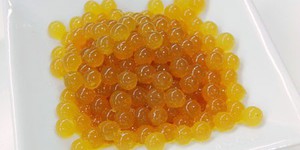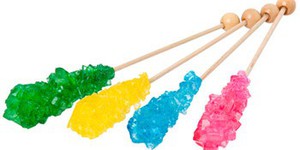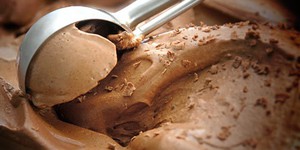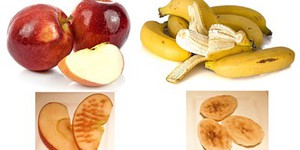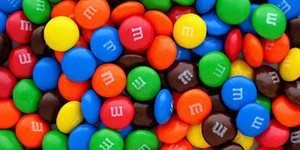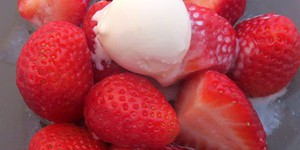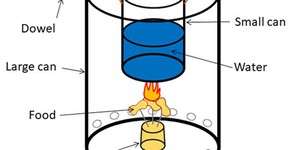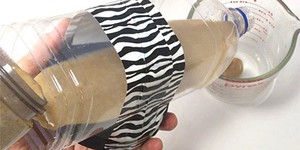Cooking & Food Science Science Projects (80 results)
Who doesn't love food? It's fun to make, it's fun to eat, it's fun to ...study? That's right! There is a lot of science that goes into the everyday foods that you love. Explore questions such as how baking ingredients work, how and why certain ingredients mix well together, and why people's tastes differ.
|
Select a resource
Sort by
|
You might have heard the saying "The eyes eat before the mouth." The appearance of food, especially its color, certainly affects how we perceive its taste. But can your eyes actually change the way you taste something? In this science project, you will find out by investigating how people perceive the taste of different colored apple juice. How do you think color affects taste?
Read more
Featured
Have you heard that garlic powder is supposed to inhibit the growth of bacteria? Which do you think would make a better disinfectant: a solution of garlic powder or a solution of bleach? This project shows you a straightforward way to compare the effectiveness of different disinfectants (or other antimicrobial agents), by measuring zones of inhibition on a culture plate.
Read more
Forget drinking your juice. Instead, try snacking on it! Use the steps and recipes in this food science project to transform drinks into semi-solid balls that pop in your mouth. The technique is called spherification and it is part of a larger food science trend called molecular gastronomy— but we just call it yummy science!
Read more
New
Artificial intelligence (AI) programs can now generate photorealistic pictures of people who do not exist in the real world. How can you tell if a picture is of a real person or a fake, AI-generated person? What features of the picture do people use to decide whether the face is real or AI-generated? In this project, you will explore these questions as you ask volunteers to look at both real and AI-generated pictures of human faces.
Read more
Here is a riddle for you: what kind of rock grows? The answer is: rock candy! This delicious candy is actually crystallized sugar and you can "grow" it from a sugar-water solution. In this science fair project you'll learn how to grow your very own rock candy and determine if using seed crystals changes the growth rate of your sugar crystals.
Read more
Have you ever made your own ice cream? If you have, you probably know that you need to get the ice cream mixture really cold to freeze it quickly. Ice cubes alone will not do the job, but if you add chemicals, such as salt or sugar, to the ice cubes that surround the ice cream container, the mixture gets cold enough to freeze. Why does that work? How does adding salt or sugar affect the freezing point of water? Find out with this ice-cold science project and use your results to make your own…
Read more
Have you ever wondered why apple slices turn brown once you cut them, or why a yellow banana gets dark spots over time? In this project you will find out why this happens, and how you can keep your apple slices looking fresh!
Read more
New
Have you ever noticed that on a hot day, it's more comfortable to wear a light-colored shirt than a dark one? Or that it's cooler in a park than walking down a street? This happens because different surfaces absorb and reflect heat in different ways. Urban heat islands are parts of cities where man-made surfaces like pavement and buildings replace natural surfaces like grass and trees. In this project, you will use temperature and satellite data to see if certain areas in a city have higher…
Read more
Quick, what is your favorite color of M&Ms® candy? Do you want to know what dyes were used to make that color? Check out this science project to find out how you can do some scientific detective work to find out for yourself.
Read more
Which type of orange juice has the most vitamin C? In this science project, you will learn how to measure the amount of vitamin C in a solution using an iodine titration method. You will compare the amount of vitamin C in three different types of orange juice: homemade, premium not-from-concentrate, and orange juice made from frozen concentrate. Which do you think will have the most vitamin C?
Read more
Would you like to add an unusual twist to a yummy food like ice cream? In this kitchen science project, you will make mind-bending hot ice cream. You will experiment with, and of course munch on this gastronomic treat. It is easy, it is delicious, and it is fun! Go ahead and try it out!
Read more
Have you ever wondered how nutritionists know how many Calories a certain food contains? In this project you will learn a method for measuring how many Calories (how much chemical energy) is available in different types of food. You will build your own calorimeter to capture the energy released by burning a small food item, like a nut or a piece of popcorn. This project gives a new meaning to the phrase "burning calories!"
Read more
How much iron is in your cereal? In this experiment, you will devise a way of testing foods for supplemental iron additives. Then you will use your design to test different breakfast cereals to see how much iron they contain. Which brand of cereal will have the most iron in it?
Read more
|
Explore Our Science Videos
Mold Hard Boiled Eggs
Investigate Alien Genetics
Why Aren't All Medicines Pills?





